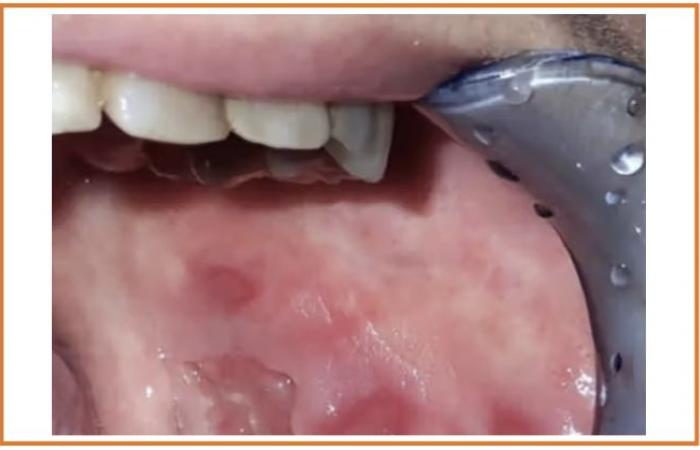Oral cancers and precancerous oral lesions are considered especially difficult to diagnose early and accurately.
On the one hand, biopsies are expensive, invasive, stressful for the patient and can lead to complications. They are also not viable if repeated examinations of the same lesion are required.
But a team of researchers, led by a clinician scientist at Case Western Reserve University School of Dental Medicine, has discovered a low-cost, non-invasive test to detect oral cancer, monitor precancerous lesions and determine when a biopsy is needed.
Their findings, published online March 4 in the journal Cell Reports Medicine, are based on a scoring system tied to the levels of two proteins in cells brushed from suspected oral lesions of patients in dental clinics or the ear department. nose and throat in university hospitals. (UH).
One of the proteins (human beta defensin 3 or hBD-3) is expressed at high levels in early-stage oral cancer, while the second (hBD-2) is low or unchanged.
The ratio of hBD-3 to hBD-2 at the site of injury—over the ratio of the two proteins at the opposite normal site—generates a score, called the beta defensin index (BDI).
A score above a predetermined threshold implies cancer; anything below does not. Determination of protein levels and quantification of BDI are routinely performed in the laboratory.
The BDI was independently validated using identical protocols at CWRU/UH, the University of Cincinnati Medical Center, and the West Virginia University School of Dentistry.
“When we discovered hBD-3, we saw that it was involved in wound healing and killing microbes,” said Aaron Weinberg, chair of the Department of Biological Sciences at Case Western Reserve School of Dental Medicine. and the study’s lead researcher. “When we discovered that it was regulated in the same way that certain cells grow uncontrollably, we began to study hBD-3 in the context of oral cancer.
“Imagine our surprise when this Dr. Jekyll turned out to be Mr. Hyde,” he said. “We found that not only did it promote tumor growth, but it was also overexpressed in the early stages of the disease, while another member, hBD-2, was not changing. the same patient led us to examine the ability of BDI to distinguish cancer from benign lesions.”
Weinberg credits Santosh Ghosh of the College of Dental Medicine for navigating the BDI scoring process.
Head and neck cancer (HNC), of which oral cancer accounts for approximately 90%, is the seventh most prevalent malignancy in the world, and developing countries are seeing an increase in its incidence. HNC accounts for about 5% of all cancers worldwide and 3% of all malignancies in the United States, according to the National Institutes of Health. There are about 640,000 cases of HNC each year, resulting in about 350,000 deaths worldwide, mainly in socioeconomically disadvantaged populations and communities poorly served by health services.
The study’s lab-based approach, which is now patented, could reduce biopsies in primary care clinics by 95% because it can tell doctors who really needs a biopsy, said Weinberg, also secondarily appointed in the Departments of Pathology and Otolaryngology at the Case Western Reserve School of Medicine. The test could also be used in developing countries where oral cancer is rampant and pathology services are questionable or non-existent, he said.
Positive data from the lab-based approach inspired the development of a point-of-care (POC) device in collaboration with Umut Gurkan, Wilbert J. Austin Professor of Engineering in the Case School of Engineering. The POC diagnostic approach measures the proportion of proteins and can be used directly in a clinic or office, providing results in half an hour.
Working through Case Western Reserve’s Office of Technology Transfer, a patent for the device is pending, setting up possible manufacturing and clinical validation as the next step.
The discovery, clinical validation studies, and development of the POC technology were supported by the National Institute of Dental and Craniofacial Research, the National Cancer Institute, the Case Coulter Translational Research Partnership, and the Ohio Third Frontier Technology Validation and Start-Up Fund.
Source: Case Western Reserve University / ScienceDaily






